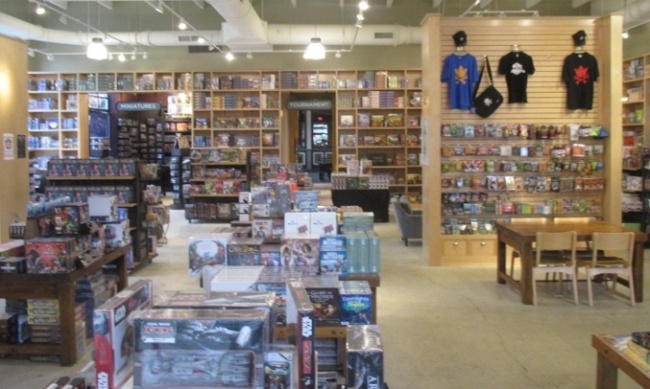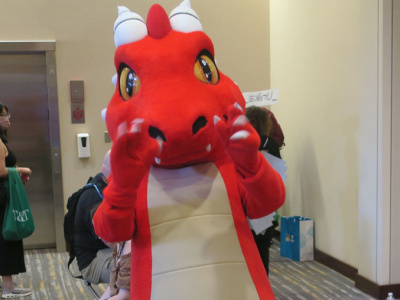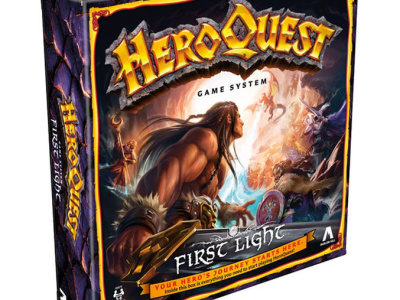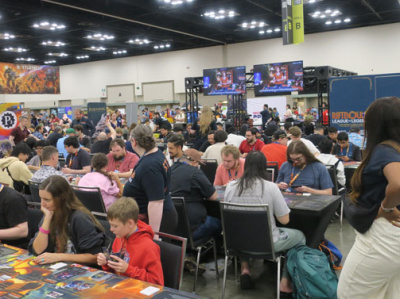Four years after Boss Monster launched in stores, Brotherwise previewed our latest game, Unearth (see “Exclusive Preview: 'Unearth'”), at this June’s Origins Game Fair. The demo tables were packed with happy players throughout the convention, and we left Origins nursing a cautious optimism that, at the very least, we had not misfired on our second title. Our colleagues were happy for us, and more than one industry insider came up to me to wish us luck, but also to ask, "What took you so long?"
I could give a lot of answers to that question, but the most important has to do with the crowded state of our industry. Even four years ago, when we first launched Boss Monster, you only had to look around the exhibit hall at Gen Con to see an industry that was packed with more games - and more gaming companies - than it seemed possible to sustain for long. "What are we doing in this crazy business?" I asked at the time, and at every convention since.
Fortunately, the rising tide of gamers that's carried the industry along for the last decade carried us along as well, and we've thrived since Boss Monster's launch. But as reported in this month's ICV2 Pro, for the first time this last spring, the growth of new games outpaced the growth of sales. If this trend continues, good games, which might have found shelf space a year ago, will not. Great games, which might have stayed on shelves for months, will not. And small game companies like ours, which might have survived one or two failed games, will not. So the answer to “what took you so long” is very simply “we had to get it right.”
Getting it right meant searching, in house and externally, for games that met a very specific set of criteria. The first of those games, Unearth, was mentioned above. The second, which we’re just calling “The Game” for now, will be revealed this fall. While these two games “made it” through our vetting, countless others did not. What criteria are we (and likely other small publishers) looking for to help our games stand out in the market?
Obviously, the first thing we’re looking for is an excellent play experience. This goes without saying, and it’s where all publishers, big and small, start when evaluating a prototype. Fun factor is the number one reason we say yes or no to a game, and it requires merciless judgment at times. The Brotherwise “Closet of Lost Games” is filled with prototypes that didn’t make the final cut of play testing, and sit hoping for their designer to work up the courage to revise, resubmit, and sit back down for another round of pummeling from our play testers.
Even when we’re satisfied with the play experience of a game, we may still pass on it. We played any number of terrific prototypes over the last four years, and still said no to the vast majority of them. This is because we’re also looking for games that will help us build a particular brand; we want distributors, retailers, and players to associate Brotherwise with accessible games that appeal to geeks and the people that love them.
Why hew so strongly toward a particular brand? Because in a market where there are simply too many games for retailers to learn and shelve, the ability to say, “Oh, The Game! You’ll love it. It’s a Brotherwise game,” is a powerful sales tool. Creating a recognizable brand is a small publisher’s number one tool for getting a new game the attention it needs to break through the crowd, and it’s a factor we can’t ignore.
There’s one last thing we look for when evaluating a new game. It’s something I’ll loosely describe as “emotional impact.” In the case of Boss Monster, its retro video game stylings and nostalgic references transported players back in time to a simpler age of games. In the case of Unearth, we went for a theme and art style that would have players starting the game feeling melancholy and subdued, then adding an emotional arc to their progress to glory and triumph over the course of the game. Without giving away too much, with The Game, we’re crafting an emotional experience focused on the delight of bringing a story, and the characters within it, to life.
At Brotherwise, we don’t always start with emotion when crafting or considering a game, but we always end there. We believe an emotional play experience is more memorable, more impactful, and more likely to be shared with others than an intellectual one. Now, more than ever, we think an emotional hook is critical to the long-term success of our games in this crowded market.
Selling games is a symbiotic partnership between publishers, distributors, and retailers. As our market evolves, this partnership is going to have to evolve as well, becoming more intimate, more informed, and more supportive. The more each partner knows about how the others are making the decisions they are, the more successful we will all be.
The opinions expressed in this column are solely those of the writer, and do not necessarily reflect the views of the editorial staff of ICv2.com.









